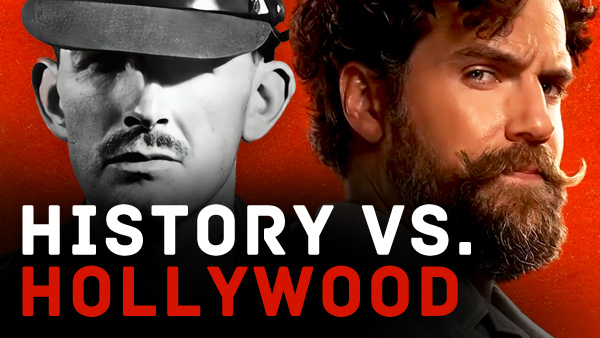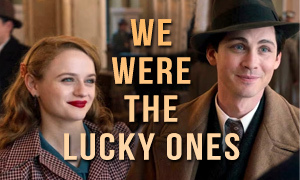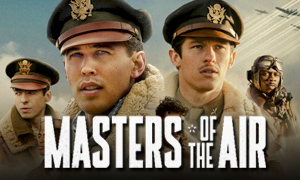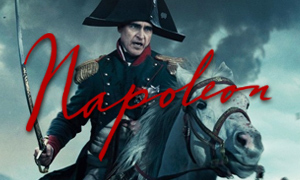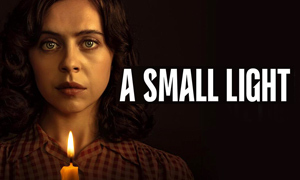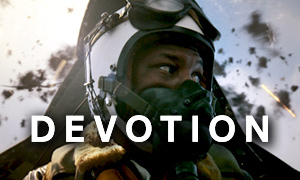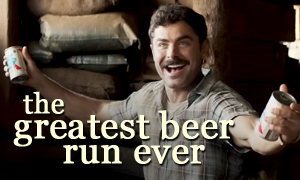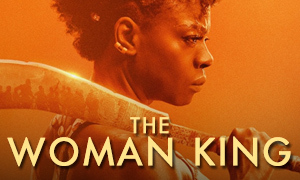The 15:17 to Paris: History vs. Hollywood
| REEL FACE: | REAL FACE: |
Spencer Stone
portrays himself in the movie Born: August 13, 1992 Birthplace: Sacramento, California, USA | Spencer Stone
Born: August 13, 1992 Birthplace: Sacramento, California, USA |
Alek Skarlatos
portrays himself in the movie Born: October 10, 1992 Birthplace: Castro Valley, California, USA | Alek Skarlatos
Born: October 10, 1992 Birthplace: Castro Valley, California, USA |
Anthony Sadler
portrays himself in the movie Born: July 13, 1992 Birthplace: Contra Costa, California, USA | Anthony Sadler
Born: July 13, 1992 Birthplace: Contra Costa, California, USA |
Jenna Fischer
Born: March 7, 1974 Birthplace: Fort Wayne, Indiana, USA | Heidi Skarlatos
Born: October 27, 1961 Alek Skarlatos' mother |
Judy Greer
Born: July 20, 1975 Birthplace: Detroit, Michigan, USA | Joyce Eskel
Born: September 20, 1953 Birthplace: Sacramento, California, USA Spencer Stone's mother |
Mark Moogalian
portrays himself in the movie Born: April 24, 1964 Birthplace: Durham, North Carolina, USA | Mark Moogalian
Born: April 24, 1964 Birthplace: Durham, North Carolina, USA Shot by terrorist |
Isabelle Risacher Moogalian
portrays herself in the movie Born: October 20, 1962 | Isabelle Risacher Moogalian
Born: October 20, 1962 Mark Moogalian's wife |
Chris Norman
portrays himself in the movie Born: abt 1953 Birthplace: UK | Chris Norman
Born: abt 1953 Birthplace: UK Brit who helped restrain the terrorist |
Ray Corasani
Birthplace: Mashhad, Iran | Ayoub El Khazzani
Born: 1989 Birthplace: Tetouan, Morocco Terrorist who carried out the Paris train attack |
Did Spencer Stone originally want to be an Air Force Para Jumper (PJ)?
Yes. This is in line with The 15:17 to Paris true story. In explaining why he chose to become an Air Force medic, Spencer Stone said, "Originally I wanted to be a PJ (Pararescueman). Got disqualified for depth perception. ... I always wanted to do medical stuff, so I picked [it] as my number one and I ended up getting it." Stone says that he believes everything happens for a reason, explaining that his medical training is what enabled him to save Mark Moogalian's life on the train. -OpsLens Interview
Had the three Americans really been friends since childhood?
Yes. The Paris train heroes had been childhood friends and were on a backpacking vacation through Europe together. Like in The 15:17 to Paris movie, Spencer Stone and Alek Skarlatos met Anthony Sadler as youths while attending the same Christian school in California. They believe that it was God's plan for them to be together on the train that day in August 2015. "We know this series of events weren't coincidences. It's like our lives were leading up to that moment," said Sadler, a pastor's son. "You don't always know what plan God has for you. What we've come to realize with hindsight is that [this] was all part of a plan, of a bigger picture. That's where we were supposed to be that day" (The Guardian). Alek Skarlatos adds that the odds for them to be in that place at that time and not only survive, but stop the terrorist, are "too astronomical to believe that it was purely just chance."
When did the terrorist attack occur?
What is often referred to as the Paris train attack (named for the destination), took place just before 6 pm on August 21, 2015 on the crowded Thalys high-speed train 9364 carrying 554 passengers from Amsterdam to Paris. The train (pictured below) was moving at over 150 miles per hour and had just crossed the Belgian-French border prior to the attack. Terrorist Ayoub El Khazzani, then 25, boarded the train in Brussels.
Did Spencer get bullied and often find himself in trouble at school?
Yes, Spencer getting picked on at school comes directly from The 15:17 to Paris book on which the movie is based. Spencer Stone and Alek Skarlatos also got into trouble at school and often did find themselves in the principal's office. In grade school, a teacher did inform Spencer's mom that she thought he had ADD and told her, "Well if you don't medicate him now, he'll self-medicate later." Both Spencer and Alek switched from public school to a Christian school around the time of junior high. Anthony Sadler arrived around the same time from a different public school, specifically to play on the basketball team. All three were not used to Christian school and refused to conform. They swore and acted out. Spencer and Alek got to know Anthony well, in part from spending so much time together in the principal's office (and because their last names all start with 'S', which meant they always lined up next to each other).
Did Clint Eastwood always plan to cast the real Paris train heroes to play themselves?
No. Originally, director Clint Eastwood had picked actors Kyle Gallner, Jeremie Harris and Alexander Ludwig to portray Paris train heroes Alek Skarlatos, Anthony Sadler and Spencer Stone. Eastwood never made official offers to the actors, and less than a month later, he cast Skarlatos, Sadler and Stone to play themselves. Eastwood said that in his mind, he kept circling back to the real-life heroes from The 15:17 to Paris true story. Two other men who helped subdue the attacker also portrayed themselves, French-American professor Mark Moogalian and British IT consultant Chris Norman. The only real-life hero missing is a 28-year-old French banker who was first to confront the terrorist while waiting to use an onboard bathroom. Often referred to as Damien A., he wished to remain anonymous after the ordeal.
Prior to being cast to play themselves, the real guys had their own opinions on who should portray them in the movie. During an Ellen interview with the cast, Alek Skarlatos said that he had wanted Zac Efron to play him, Anthony Sadler had wanted Michael B. Jordan, and Spencer Stone had wanted Denzel Washington, which he admits would have been a stretch.
It's rather rare but not uncommon to have the real people portraying themselves as the main characters. In 2017, comedian Kumail Nanjiani played himself in The Big Sick, but Nanjiani is an experienced actor and one of the stars of HBO's Silicon Valley. Audie Murphy, the most decorated U.S. soldier in World War II, portrayed himself in the 1955 movie To Hell and Back. Sports legends Jackie Robinson and Muhammad Ali starred in their own biopics. 1997's Private Parts featured Howard Stern taking on an autobiographical role.
Were all three American friends members of the military?
Like in The 15:17 to Paris movie, two of the Americans were in the military. 23-year-old Spencer Stone was a medic in the Air Force, and 22-year-old Aleksander "Alek" Skarlatos was an Oregon National Guard Specialist who had recently returned from a stint in Afghanistan. Their friend Anthony Sadler, 23, was a senior at California State University in Sacramento.
What is the meaning behind the movie's title?
The title The 15:17 to Paris refers to the time that the train departed Amsterdam Centraal station.
Who else was involved in subduing the terrorist besides the three American friends?
In addition to American passengers Alek Skarlatos, Anthony Sadler and Spencer Stone, three other men helped to subdue terrorist Ayoub El Khazzani. 51-year-old French-American professor Mark Moogalian, who teaches English at the Sorbonne, was the second person to confront the attacker after he emerged from the bathroom with an assault rifle, a pistol, and the blade from a box cutter. The shirtless gunman had already overpowered a 28-year-old French banker known only as Damien A., who attempted to tackle El Khazzani as he was waiting to use the bathroom and El Khazzani was exiting. Damien A. fell to the floor in the struggle. Moogalian managed to wrestle the rifle away from El Khazzani, but as he turned to get his wife out of harm's way, El Khazzani pulled out a concealed 9mm Luger pistol and shot him in the back. The bullet traveled slightly upwards through Moogalian's body, breaking two ribs and piercing his left lung before exiting toward the front of his neck (CNN Mark Moogalian Interview). Moogalian was left bleeding heavily on the ground as El Khazzani picked up his rifle.
Christopher Norman, a 62-year-old British IT consultant, readied himself in his seat to make his move on the terrorist when he came up the aisle. "When he didn't actually appear in front of me and I heard some banging and thumping, I thought, well somebody's having a go at him. So I joined in," says Norman (The National). By that point, the three Americans were tackling and beating on the gunman as he tried to reach for his weapons. Once American Spencer Stone choked him unconscious, Norman and a French train driver assisted Americans Alek Skarlatos and Anthony Sadler in holding down the terrorist and hog-tying him using pieces of clothing given to them by some of the passengers. It was Norman's idea to tie him up. "Do I think of myself as a hero? No," he told reporters in Arras, France. "If there are heroes, it's [Alex Skarlatos] and Spencer. And I think without Spencer we'd all be dead." This Paris train attack footage shows the gunman tied up on the floor of the train moments after he was subdued.
How did the three Americans manage to take down the gunman?
The 15:17 to Paris true story confirms that the take-down of the gunman in the movie plays out almost exactly as it did in real life. 23-year-old Anthony Sadler, along with his friends Alex Skarlatos and Spencer Stone, were alerted to the situation on the train when they heard gunfire. The sound woke Spencer from a nap. "At that point I ducked down," Skarlatos told Britain's Sky News. "[Spencer] next to me ducked down." Skarlatos had recently returned from a deployment in Afghanistan. "I just looked at Spencer and said, 'Let's go! Go!' "
Skarlatos said that Spencer started moving first. "I followed behind him by about three seconds. Spencer got to the guy first, grabbed the guy by the neck and I grabbed the handgun, got the handgun away from the guy and threw it. Then I grabbed the AK which was at his feet, and started muzzle-bumping him in the head with it." The three "just started beating on the guy while Spencer held the chokehold until he went unconscious." In the process, the assailant cut Spencer with a box cutter in the head, neck and hand, nearly slicing Spencer's thumb off. This is shown in the movie. Not shown in the film is when Alek was trying to hit the attacker in the head with the muzzle, the muzzle slipped off and Alek accidentally ended up driving it into Spencer's eye.
Did the gunman's rifle jam?
Yes. American Alek Skarlatos discovered that the bullet in the chamber of the AK-47 assault rifle that 25-year-old terrorist Ayoub El Khazzani was carrying had a faulty primer, which means that when the firing pin struck the bullet, the chemical reaction that was supposed to cause a spark didn't happen. It never ignited the gunpowder that was supposed to fire the bullet. "I mean if that guy's weapon had been functioning properly, I don't even want to think how it would have went," Skarlatos told Sky News. He's mostly correct in the movie when he says that the chances of that happening are one in a million. A faulty primer is indeed a very rare occurrence. Train occupants reported that the gunman pointed his rifle at them and tried to fire. They heard a horrifying "click, click, click." (The Guardian).
Did the terrorist take aim at American Spencer Stone as Stone ran at him?
Yes. The 15:17 to Paris true story reveals that Spencer Stone and the others were really that close to dying. Ayoub El Khazzani lifted his AK-47 semiautomatic assault rifle, took aim at Stone and tried to fire, but like in the movie, the gun had jammed, which allowed Stone to get to him. "It's a pretty paralyzing feeling," Stone told The Guardian. "You look at a guy with a loaded, automatic AK-47, and you think the only result is going to be your death. Running at him, we had no hope of actually making it to him." Stone told Ellen Degeneres that prior to deciding to rush the terrorist, he noticed that the terrorist had either jammed the gun or something else was wrong because he hadn't started shooting yet.
How much ammo did the attacker have?
Train attacker Ayoub El Khazzani was carrying 270 rounds of ammunition in a total of eight magazines, more than enough for a mass casualty attack. Like in the movie, the account told in The 15:17 to Paris book confirms that El Khazzani used a backpack to help conceal the ammo and weapons, which included a side-folding Draco AK-47 assault rifle with a collapsible butt and a slant-cut muzzle, a 9mm Luger semiautomatic pistol, a bottle of gasoline, a blade from a box cutter, and a hammer.
Did the gunman point the pistol at Spencer Stone's head and try to fire?
Yes. In addition to pointing the rifle and trying to fire at Spencer as Spencer charged him, Ayoub El Khazzani pulled out a 9mm Luger pistol while Spencer was attempting to secure a chokehold. As seen in the movie, the terrorist reached behind him and pointed the gun at Spencer's head. He pulled the trigger but the pistol didn't go off because there was no bullet in the chamber.
Did American Alek Skarlatos try to shoot the terrorist?
Yes. As they fought to subdue Ayoub El Khazzani, Alek Skarlatos first tried to shoot him in the head with the machine gun but it was already jammed. Then after Alek got the pistol away from the terrorist, he tried to shoot him in the head again as Spencer Stone struggled to hold him. Alek pulled the trigger twice but the pistol didn't fire.
Did anyone die in the real-life attack?
No. The most critically injured was Professor Mark Moogalian, 51, who was shot in the back with a pistol after wrestling the rifle away from terrorist Ayoub El Khazzani. The bullet traveled slightly upward through Moogalian's body, breaking two ribs and piercing his left lung before exiting the front of his neck. He was bleeding heavily. Once the gunman was restrained, American Spencer Stone, himself badly injured, utilized his training as an Air Force medic to administer first aid to try and control Moogalian's bleeding. At first, he tried to wrap his shirt around Moogalian's neck but that didn't help, so he then stuck two fingers into the wound and pressed down on an artery, which halted the bleeding (Reuters). The Paris Train Attack Video shows footage of Stone tending to Moogalian just a few feet away from the hogtied terrorist. Stone, a devout Christian, asked Moogalian if he wanted to pray. "He actually said no," recalled Alek Skarlatos (The Guardian).
While trying to restrain El Khazzani, Stone had put him in a choke hold, but the terrorist still managed to cut him with a box cutter blade in the head, neck and hand, severing Stone's thumb to the point that the bone was visible. The other two Americans, Alek Skarlatos and Anthony Sadler, were uninjured.
Did the gunman say anything during the attack?
The gunman didn't say much except that he wanted his gun back. "He just kept telling us to give back his gun: 'Give me back my gun, give me back my gun!'" recalled 23-year-old American Anthony Sadler. -People
How long did it take for the train to reach the station after the attack?
The 15:17 to Paris book states that following the attack, it took approximately 30 minutes for the train to reach the station in Arras, France, where it had been diverted. In the movie, the time seems to go by more quickly.
Is the gunman, Ayoub El Khazzani, a terrorist?
Yes. According to France's BFM TV, 25-year-old gunman Ayoub El Khazzani initially maintained that he "found" the weapons in an abandoned suitcase in a park in Brussels, Belgium, claiming that he wasn't a terrorist and was only trying to take the train passengers hostage for ransom. El Khazzani's lawyer, Sophie David, said that he was trying to carry out a robbery in order to get money to feed himself. "He denies any terrorist dimension to his actions -- the suggestion makes him almost laugh," said David shortly after the attack (CNN).
French officials and others believed that the story was a fabrication designed to cover his true intentions. They pointed to the fact that he was armed with a Kalashnikov assault rifle, a Luger pistol, a box cutter, about 300 rounds of ammo, and a bottle of gasoline, which clearly indicates that he was planning a massacre. The truth came out more than a year later, in December 2016, when El Khazzani's lawyer released a statement to the Associated Press saying that he had been under orders from an Islamic State terrorist cell to carry out the August 2015 attack on the train. It turns out the orders came from Abdelhamid Abaaoud, the mastermind behind the November 2015 Paris attacks on cafe terraces, a concert hall and a stadium that killed 130 people. Abaaoud, 28, died during a police raid five days after the November attacks in St. Denis, a Paris suburb (The Washington Post).
Prosecutors also discovered YouTube audio files on El Khazzani's phone, which he listened to immediately before the attack. In the audio, a man tells "his followers to raise arms and fight in the name of the prophet."
El Khazzani had been known to European authorities prior to the Thalys train attack. French Intelligence had even put an S notice to his name in February 2014, signifying possible radicalization and someone who merits surveillance. He had been flagged due to extremist comments he made defending jihad and for his connections to a radical mosque in Spain, where he had previously lived after moving from Morocco with his family in 2007 (Daily Mail Online). He also confessed to spending time in Syria in May 2015 for weapons training, but was urged to return to Europe to carry out an attack. U.S. authorities were not aware of El Khazzani and he was not on the U.S. no-fly list, meaning that he could have gotten on a plane bound for the U.S. without any trouble.
While living in Spain, Ayoub El Khazzani had worked as a house painter and was twice convicted for drug smuggling. He relocated to France in early 2014 to take a job with mobile phone company Lycamobile, handing out flyers and cheap trinkets, and signing people up for SIM cards. However, he was let go after two months supposedly for not having the right work papers, though The 15:17 to Paris book implies that it was likely because, by this time, word had gotten back to the company that French authorities had put him on S notice. After a while, El Khazzani found himself staying at his sister's home above a Carousel minimart in Brussels.
Did Ayoub El Khazzani appear to be well trained?
No. El Khazzani didn't seem to know how to fix his rifle when it jammed during the attack. He also accidentally released the magazine from his pistol. "He clearly had no firearms training whatsoever," said American Alek Skarlatos, who helped subdue the gunman. "If he knew what he was doing or even got lucky and did the right thing, he would have been able to operate through all eight of the magazines, and we probably wouldn't be here today" (CNN).
"We got the world's worst terrorist," Skarlatos said later (Los Angeles Times).
Were the Paris train heroes awarded for their actions?
Yes. As shown in the movie, President Hollande of France presided over the Legion of Honour ceremony for Spencer Stone, Anthony Sadler, Alek Skarlatos and Chris Norman on August 24, 2015, three days after the Paris train attack. The men were made Knights of the Legion of Honour (the wounded Mark Moogalian was awarded the distinction on September 13, 2015 and the passenger known only as Damien A. was expected to be similarly honored). They also received the medal of the city of Arras, where the Thalys train was diverted, and the Prime Minister of Belgium awarded some of the heroes with the Civic Medal 1st class.
In the United States, Spencer Stone was awarded the Purple Heart and the Airman's Medal. He was meritoriously promoted two grades to Staff Sergeant. Alek Skarlatos was given the Soldier's Medal, the top distinction given to military personnel for heroism outside of combat. Civilian Anthony Sadler was awarded the Secretary of Defense Medal for Valor. Stone, Sadler and Skarlatos were also invited to the White House and were thanked in person by President Obama.
Was the movie shot on an actual moving train?
Yes, at least certain scenes of it were, including the attack, which was recreated on a train going back and forth between Amsterdam and Paris. It was shot over the course of five days and Clint Eastwood was intent on making sure it was true to reality. "We're wearing the same clothes. It's Mark [Moogalian]. It's his wife. Everything was exactly the same," said Spencer Stone. Director Eastwood didn't want the typical far-fetched action-movie suspense. In his mind, the two minutes that the actual ordeal lasted were exciting enough. -Los Angeles Times
Did the three real-life heroes have fears about playing themselves in a Clint Eastwood movie?
Yes. "I really didn't want to ruin the movie," Anthony Sadler told the Los Angeles Times. "I'm like, 'Actors can do this and it would probably be more successful.' But Spencer was like, 'Are you really going to look 20 years down the line and say you could have been in a Clint Eastwood movie but you're not?' And that convinced me right there. There's no way you could deny that." They suggested to director Eastwood that they should probably take some acting classes first, but he told them that he wanted them "to be natural and do it how it happened." Acting classes would only make it look like they were acting.
They told The Guardian that they also wanted to do the movie because of its positive message, namely that God has a plan for each of us and everyone has it in them to do the extraordinary. "I think it's our responsibility to take that message and be responsible with it and spread it as much as we can so we don't waste the opportunity that [God] gave us," said Anthony Sadler.
Did the three American heroes want to further pursue acting after making the movie?
Yes. Stone, Skarlatos and Sadler, all 25 at the time of the movie's release, hope to pursue acting professionally. Spencer Stone moved to Los Angeles after making the movie and Anthony Sadler plans to follow. Alek Skarlatos appeared on Season 21 of Dancing with the Stars, finishing third. They are taking acting classes and have secured agents and publicists. Sadler recalls a moment between takes when Clint Eastwood looked at him and said, "Not a bad way to make a living, is it?" Sadler agreed. However, he realizes it's not an easy business. "If it ends now, it would be enough." -Los Angeles Times
"The 15:17 to Paris" Interviews & Train Footage
The 15:17 to Paris interviews below feature the real heroes who were cast to play themselves in the Clint Eastwood movie. Listen to the true story of the Paris train attack described by the heroes who lived it and see actual cell phone footage shot by Anthony Sadler just after the attack.
Link-to-Learn More:
